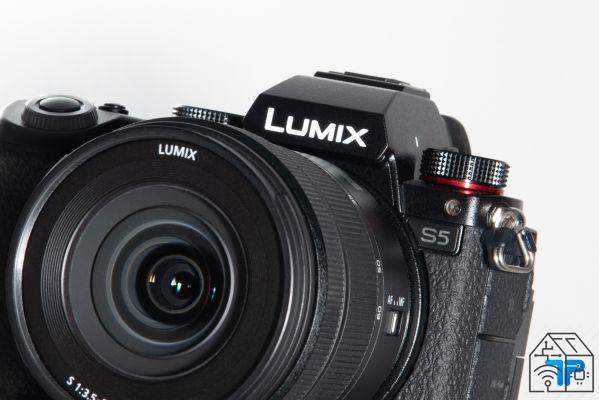
Lumix S5 review
At the beginning of September Panasonic presented to the public the new baby of the house, the Lumix s5. This mirrorless expands the Lumix S full-frame range, with a product aimed at a wider audience than the S1 series. In fact, if the older sisters were oriented towards a more professional user, with Lumix S5 the attempt is to bring more people to embrace the world of full format.
The heart of the Lumix S5 is the same 24,2MP full-frame sensor of Lumix S1, which we already know what it can offer, but first of all we must applaud the Panasonic engineers who have managed to build around it an almost perfect body. To give you a term of comparison, the dimensions are more or less the same as GH5, which instead has a Micro Four Thirds sensor inside, much smaller than the full-frame one. Even before going into the details, I can tell you that from an ergonomic point of view Lumix S5 convinced me fully, also due to the perfect combination with the kit optics. The Lumix S 20-60mm f / 3,5-5,6 is indeed the S5's ideal companion, for both stills and videos.
The camera body
If some of the criticisms leveled at the S1 series bodies had been related to weight and bulk, with the new Lumix S5 Panasonic has certainly remedied. In a body that weighs just 630gin fact, almost all the main features of the full-frame flagship models have been compressed. This aspect alone should make us understand a lot of the work done at Panasonic.
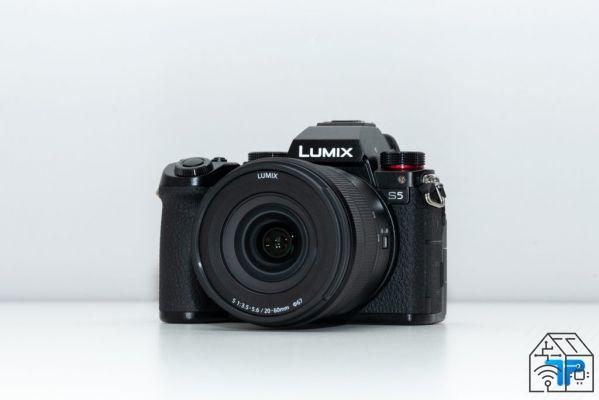
On the upper profile, the S5 loses the second display, the one that is essential for many professionals, but which for a wider audience can be considered something more to be given up. The layout of the controls, however, immediately brings us back to the usability of higher-end products, with rings and buttons well distributed on the machine body. Particularly comfortable the trio WB, ISO and exposure compensation right behind the shutter button. The management of AF modes is equally practical, with a dedicated button with a selector to quickly switch between single, continuous or manual focus.
In such an organized context, I was sorry not to see the left ring endowed with customizable positions in addition to those already preset. Basically there is a ring with only 5 shutter modes and half empty. If you like, a little waste of space.
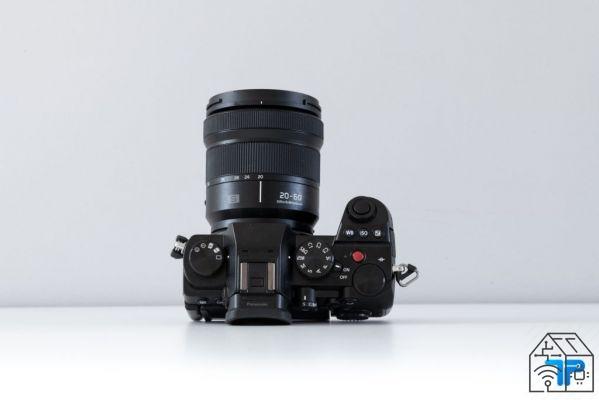
Another small flaw we find on another ring, the one coaxial to the shutter button. It seems to be made of a less resistant material than the others.
Moving on to the back, I already told you about the selector for AF modes, but I didn't tell you that there is a large 3-inch diagonal swivel display which obviously is equipped with touch functionality. If from an operational point of view it is very precise and reactive, the pivot joint may seem slightly delicate. The use of the electronic viewfinder is also pleasant, even if after using the S1 series with great satisfaction you can see the difference. It is a 2,360k-dot OLED Live View Finder, about half the resolution of what we find on S1. This does not mean that it is an excellent viewfinder, able to offer a clear and natural vision in every situation.
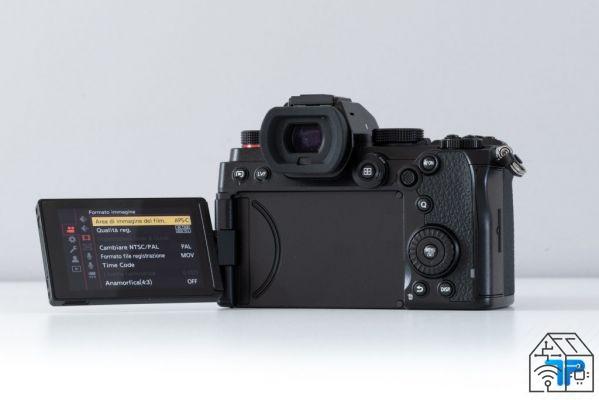
Like the other Lumix Ss, the small S5 is also equipped with a dual memory card slots. Too bad they don't both offer the same performance and only one is compatible with UHS-II SD cards. So if you need to record videos at maximum resolutions, be careful to use slot number one. Obviously also to use fairly fast SD cards. The second slot, however, can be very useful for creating backups or perhaps saves at lower resolutions.
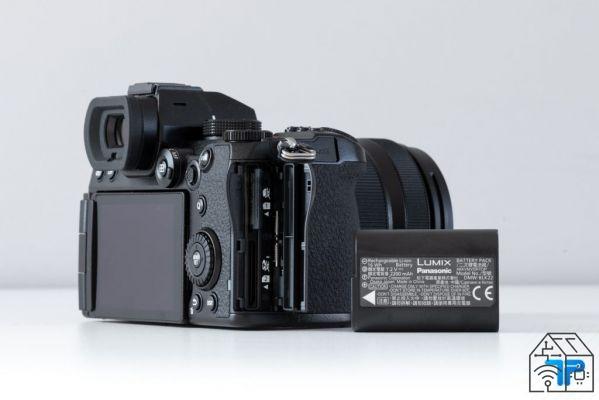
On the opposite side to the one where we find the SD cards, the world of input and output interfaces opens up. There are a microphone port, a headphone port and a convenient USB Type-C. The latter is convenient for charging the battery and powering the camera even during its use. A small sore point is the HDMI port: it's not in full frame. But this is probably a decision also linked to the size of the camera body.
Finally, taking a look at the bottom of the new Lumix S5, in addition to finding the classic compartment for the battery, I really appreciated the presence of the contacts to mount the vertical handle.
Lumix S5: performance and image quality
I already talked to you about all the technical specifications at the beginning of September when the camera was presented, so I'm going straight to the gist of this Lumix S5 review: image quality.
One thing related to the characteristics, however, I tell you anyway: if you are looking for a mirrorless for sports or action photography probably Lumix S5 is not for you. The 7 fps alone makes it suitable perhaps for photographing children playing, but it is not enough for real action. Sure, there are 4K / 6K Photo mode, thanks to which even 30 fps is reached, but with small videos from which to extrapolate 18MP files.
For any other scenario S5 can represent an excellent ally, also considering how the performance of the AF system has actually been improved. A subject moving along the frame is followed precisely, especially when the movement is predictable. Some difficulties are still present if instead the movement is not uniform in speed and direction, but certainly a first step to improve one of the most criticized aspects of Panasonic has been taken. One note that will make all S1 owners happy (regardless of the specific model) is that this new autofocus system is also available to them with a firmware update.
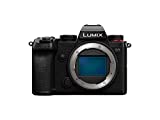 Panasonic Lumix DC-S5E-K Fotocamera Full Frame Mirrorless,...
Panasonic Lumix DC-S5E-K Fotocamera Full Frame Mirrorless,...
- Excellent image quality: 24MP, 96MP HighRes-Shot CMOS sensor.
- High quality image stabilizer: 2-axis Dual Image Stabilizer 5 system
- Perfect for content creators: 4K 60p 4: 2: 0 10-bit, 4K 30p 4: 2: 2 10-bit video recording plus 4K 8bit without ...
Staying on the subject of autofocus, I found the search for faces and eyes to be extremely precise. This means that we have a really important help to take portraits. Even when the light is scarce.
Another aspect to promote is certainly the autonomy of the S5. For those who take photographs and not videos, using some tricks to save energy, you can get up to a full day of shots. We will not have the same performance shooting clips in 4K, never turning off the camera or not planning to use the convenient power saving mode. The positive aspect is however that Lumix S5 can be recharged via USB-C, therefore also with a power bank.
Sensor and image processor are the same as the Lumix S1, so from a qualitative point of view I knew perfectly well what to expect. The results, in fact, did not betray the expectations and we are in front of a mirrorless capable of offering a wide dynamic range, a very faithful color reproduction and also a lot of detail in the images.
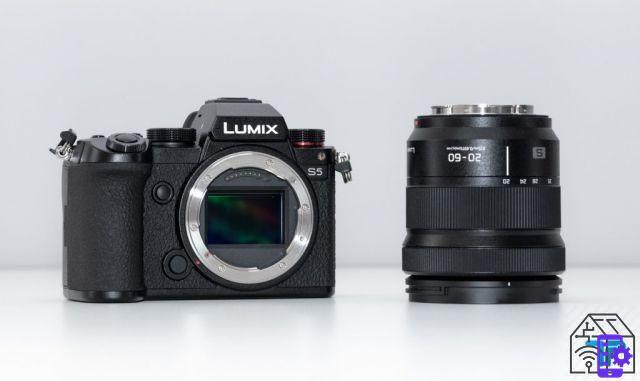
The S5 automatisms work well, offering well balanced images and even in very contrasted conditions the results are certainly sufficient. I also thought I had to adapt to working with kit optics, which are usually never the best lens. But the new 20-60mm proved to be a fantastic travel companion, not only for size and weight as I have already mentioned, but also for the performance offered. Being able to count on a wide angle like 20mm is already a point in favor, to which is added a good control over optical distortions. The fact that it is not considered a Pro lens (it only lacks the f / 2,8 aperture to be one) makes it even more interesting from an economic point of view. And anyway at maximum aperture the 9-blade diaphragm exhibits excellent blur.









In particular, then, the low light performance is to be commended: up to ISO 6400 the noise is practically not seen. Going up with the sensitivity we can use without fear even images at ISO 12.800, but unless it is strictly necessary, I do not recommend going further. In reality, the amount of detail that we can continue to read even at ISO 51.200 is still good, with images, however, still usable only in small formats or on social networks.










Finally, if someone were to turn up their nose for the resolution of the sensor of "only" 24,2MP, know that on board the S5 there is a high resolution shooting mode. We will be able to create RAW and even JPG files of 96 million pixels and shoot with exposure times that reach 8 seconds. The result is a 12000 × 8000 pixel file from which you can easily extrapolate even a small portion and have a high quality result.



Conclusions
With this model Panasonic wanted to offer something less bulky and heavy, but also less expensive than the S1 series. The price list is for sale only the body at € 1999, while with the kit optics you get to € 2300. There are those who define entry-level models as the first price of a range, but Lumix S5, although technically it is, is anything but an entry-level. Being able to pack all this technology into such a compact body is an incredible feat of engineering and while there are some small details that perhaps could have been done better, I struggle to find a full-frame mirrorless that offers all of this at this price point.
There is still some work to be done on autofocus to achieve the results of other competitors, but Panasonic is finally moving in the right direction in this respect as well. In conclusion, Lumix S5 is a camera that could meet the needs of many users, both for photo and video quality.
It can in fact become a second agile body for those who already own a Lumix S1 or be the perfect full-frame camera for a trip. But it will also be able to adapt to the video environment, being able to easily enter the workflow of a system based on mirrorless or higher-end Panasonic cameras.
In short, there is nothing more to say except that it is a really successful hybrid.


























